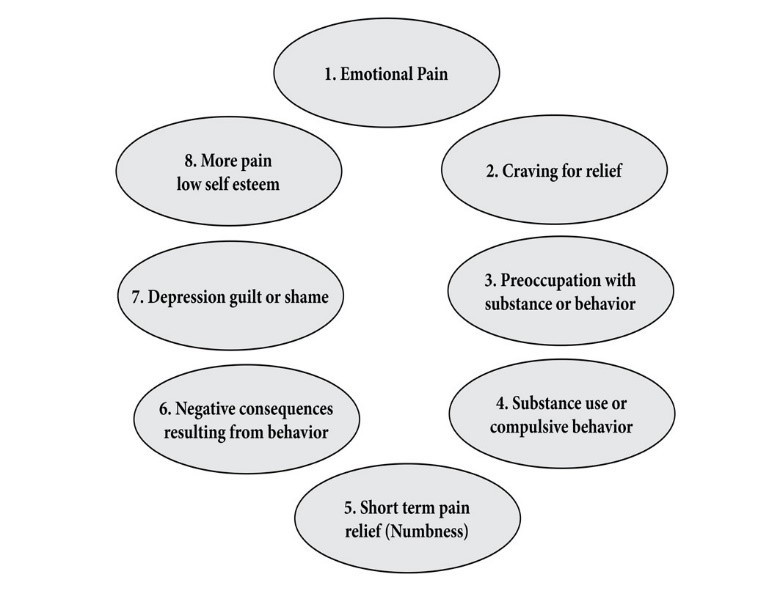Understanding Addiction – Principles
SCRIPTURAL DIRECTION AND PRINCIPLES
The topic of addiction is an unfortunate and increasing issue in families and with those we love. It is essential to develop a clear understanding of all aspects of addiction, including the foundations of addiction as well as various treatments.
To begin, it is important to consider a few guiding Scriptures which balance the call laid out in the Bible to both accountability and compassion for individuals with addictions.
Scriptures of Accountability
Mark 7:20-23, “And he said, That which cometh out of the man, that defileth the man. For from within, out of the heart of men, proceed evil thoughts, adulteries, fornications, murders, thefts, covetousness, wickedness, deceit, lasciviousness, an evil eye, blasphemy, pride, foolishness: All these evil things come from within, and defile the man.”
1 Corinthians 9:27, “But I keep under my body, and bring it into subjection: lest that by any means, when I have preached to others, I myself should be a castaway.”
Galatians 5:19-21, “Now the works of the flesh are manifest, which are these; Adultery, fornication, uncleanness, lasciviousness, idolatry, witchcraft, hatred, variance, emulations, wrath, strife, seditions, heresies, envyings, murders, drunkenness, revellings, and such like: of the which I tell you before, as I have also told you in time past, that they which do such things shall not inherit the kingdom of God.”
Scriptures of Compassion
Galatians 6:1, “Brethren, if a man be overtaken in a fault, ye which are spiritual, restore such an one in the spirit of meekness; considering thyself, lest thou also be tempted.”
1 Thessalonians 5:14, “Now we exhort you, brethren, warn them that are unruly, comfort the feebleminded, support the weak, be patient toward all men.”
Jude 22-23, “And of some have compassion, making a difference: And others save with fear, pulling them out of the fire; hating even the garment spotted by the flesh.”
UNDERSTANDING ADDICTION– Definitions
Addiction is a compulsive or physical dependence upon a substance, person, or behavior that provides a temporary sense of well-being (with emphasis on temporary). In a severe addiction, “well-being” may be replaced by “release from pain or discomfort.” Addiction results in harm to the person’s health, relationships, spiritual life, vocation, emotional well-being, and/or finances. The actual substance, behavior, or person the individual focuses on is not the addiction. Rather, those are “addictive agents.” Addictive agents may include drugs, alcohol, food, sexual behavior, work and success, money, approval of others, certain types of relationships, exercise, dieting, etc.
There is a difference between abuse of an addictive agent and dependency or being addicted to an addictive agent.
Abuse of an addictive agent is an individual’s elective choice despite its negative effects. For example, alcohol abuse refers to drinking alcohol in a way that leads to problems in the person’s life (work, financial, legal, family problems, etc.). However, poor choices alone do not indicate the presence of an addiction.
Dependence to an addictive agent means that the person has developed (1) tolerance and (2) withdrawal.
Tolerance occurs when one needs an increased amount of a substance/behavior in order to achieve the desired effects. Another sign of tolerance is when a person obtains a diminished effect from using the same amount of a substance/behavior over time.
Withdrawal effects occur when the addicted person stops using the addictive Withdrawal effects are specific to the addictive agent and cause distress physically and emotionally.
When individuals are trying to overcome addictions, periodic setbacks are common. A slip occurs when a person is making progress, falls back into his old ways for a short period, but then quickly returns back to doing what is necessary to live an overcoming life. A “relapse” occurs when someone slides back into his old ways and isn’t immediately willing to return to doing what is necessary to overcome. A person in relapse slides much further back into the addiction than someone who has a slip.
COMMENTARY ON THE DEFINITION OF ADDICTION
Using the term “addiction” does not excuse sin. Rather, the term describes the process Satan uses to hook someone into sin. John 8:34, “Jesus answered them, Verily, verily, I say unto you, Whosoever committeth sin is the servant of sin.” James 1:13-15, “Let no man say when he is tempted, I am tempted of God: for God cannot be tempted with evil, neither tempteth he any man: But every man is tempted, when he is drawn away of his own lust, and enticed. Then when lust hath conceived, it bringeth forth sin: and sin, when it is finished, bringeth forth death.”
Some addictions do not occur to a degree that is overtly damaging. Because of this we don’t choose to invest the energy necessary to overcome. Certain eating habits are an example of this. Many people do not correct their eating until a heart attack, diabetes, or other condition forces them to invest the effort. Some addictions are so powerful they are life-threatening.
Some addictions create a dependency which makes withdrawal life-threatening. For example, withdrawal from a severe drug addiction may lead to severe flu symptoms until the drug is taken. Withdrawal symptoms to this degree can require hospitalization. Some alcoholics and drug addicts actually die from the withdrawal.
Some addictions alter a person’s physiology in ways that make him very vulnerable in the future. Cocaine and other hard drugs can reduce the chemicals in the body which give the person the experience of pleasure. When he stops taking the drug, an addict may be incapable of experiencing pleasure for a long period of time. This creates a significant period of vulnerability because the drug is the only agent that can bring pleasure when he is trying to cope with the realities of life.
Some addictions are powerful because they help mask pain or hurt in someone’s life. When the person feels the pain of life or is under significant stress, the temptation and memory of escape by using the drug is very powerful and may lead to a fall.
The addiction cycle can be illustrated by this diagram, going clockwise from the top. It can be very binding in the life of an individual. Through the addict’s willingness to do whatever it takes to heal, God’s intervention, and those God chooses to use as helpers in the process, the addict must break loose from this cycle at some point.

Further Information
Addictions Podcast Episodes ![]()
Am I addicted? These episodes begin to sort through the finer points of addiction. What it is. How it works. What it means. Learn about the characteristics of addiction while at the same time framing up the hope that can be found.





Comments
Leave a Comment